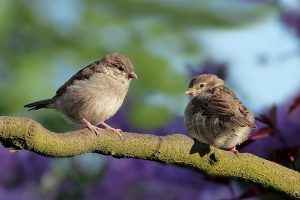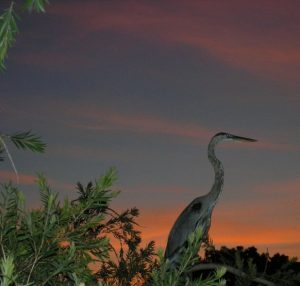
Birds are everywhere. You find them in your backyard, in the trees, and flying within your field of vision while driving or walking. You hear them sing their songs and make their otherwise friendly bird sounds as they go from one place to another. There’s really little you can do to expel the bird from your daily life. And why would you want to? With many species bringing so many variations of appearance, size, and color, you’re likely to see and hear at least 10 different species in a single day. As beautiful and seemingly plentiful as these birds appear, they face a daily threat of predators, habitat disruption, and disappearing food sources. That’s why enlightened cities and towns are beginning to view themselves as a “bird-friendly community.”
Lights Out

So, what’s a bird-friendly community? It’s when a city or town takes it upon itself to legislate safeguards within the community to protect birds from a series of potentially dangerous things. In 2020, Lafeber posted an article about the dangers of building collisions in large cities with tall buildings during migration. These collisions were escalated due to the nighttime lighting of buildings. Birds are vastly dependent upon their natural instincts for travel in the airspace. As they migrate, strongly lit buildings within a metropolis have wreaked havoc on their navigational system and have killed many thousands of birds as they collide into buildings.
Birds are drawn to light. They use it to properly navigate. But when artificial lighting appears in their migratory travel, they are also drawn to it. As a result, some of the biggest cities in migratory pathways have decided to reduce their night lighting significantly by way of suggestion. Chicago, Dallas. Fort Worth, and Houston have responded with “lights-out” pacts that cater to the well-being of our birds.
In Texas, an initiative known as Lights Out Texas sought to partner with building owners to shut lights off. With nearly two billion birds passing through Texas annually from their southern stayovers, this initiative is essential to the many birds flying. (I live in Fort Worth. Living in close view of the city’s skyline, I can verify that the city is extremely dark at night from their light reductions.) Chicago has been involved in this practice since 1995 with their Lights Out Chicago initiative. Audubon Societies within the cities as well as the Cornell Lab of Ornithology have worked closely to produce favorable results.
Building Bird-Friendly Habitats

But lighting is a protective measure designed to assist migrating birds. What about birds that are part of the ecological structure of a city or township? Many locations have gone to great lengths to install favorable habitats so birds of the area can find nesting homes and more safety. Within such parks and artificial habitats, significant efforts have been undertaken to install proper trees, plants, and flowers that naturally attract birds. These movements have rapidly spread throughout locations and contribute not only to the attraction and eventual well-being of the birds, but also to the people that emotionally enjoy birds being nearby. New York City’s famed Central Park is one of the country’s greatest effort at combining nature with an urbanized metropolis. There are many enthusiasts that haunt this park for bird sightings of all kinds, including unusual stopovers.
Back yards become favored locations as property owners can naturalize their yards to create unique hot spots for visitation. Specific plants and trees coupled with clean and sanitized bird feeders and baths have contributed to extraordinary displays of bird gatherings. These bird-friendly spots allow for the photo capture of birds and might even allow for the rare picture of a mutated bird that shows up occasionally.
As cities, towns, and property owners begin to contribute to the well-being of nature’s birds, it can only lead to good things for all of us. Not only are our birds increasingly protected from the glare and intrusion of our technologies, but they are also the lucky recipients of naturalized spots to allow for them to live stress-free. If you’re interested in creating a bird-friendly spot, the internet is a vast resource of information that gives suggestions for every species. But it also delivers sound and proven solutions to problems that you yourself can help to correct…like turning your artificial lights off for the evening hours.
